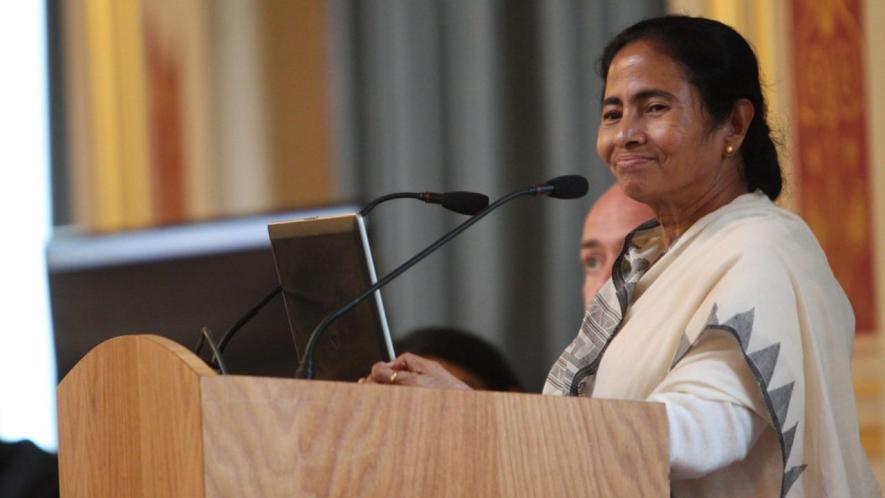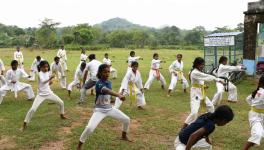Dear Didi, It’s Not Night That Endangers Women

Image Courtesy: Flickr
West Bengal Chief Minister Mamta Banerjee's remark on the Durgapur gangrape case has caused much uproar offline and online. The outrage is justified and very much valid. It's 2025 and women have had it with all the moral policing and the victim blaming.
But hand to heart, while Banerjee, who has since claimed that her statement was distorted, was wrong to question why the survivor was out late at night, but ask any woman, the nature of the remarks are unfortunately not too unfamiliar.
Our parents discourage us from venturing outside at night, our partners need us to share our live location while taking a cab in the dark, our girlfriends would have us crash at their place rather than travel at night, we turn down jobs because we may have to work night shifts. You get the drift.
It won't be wrong to say that most Indians do not think it is safe for women to step outside late in the dark. Most women do not think they are safe when they are out late at night. And like it or not, if something does happen to a woman, among things like the perpetrator, the location of the incident, one thing that concerns us is the timing of the incident.
It is not just our uncles or aunts, or other boomer relatives who believe that women should not be out at night if they want to avoid untoward incidents, much of the younger generation also believe that women are safer in the day.
As someone who worked two years of her post-graduate life to get universities in Delhi to rollback discriminatory rules and regulations, I spent most of my time convincing other female students that having a 8 p.m curfew time to enter the hostel was no way of ensuring women’s safety. Several women, well above the age of 18, were convinced that to prevent themselves from sexual harassment and assaults, it was important to step outside only in the comfort of sunlight.
Conversations around safety, our social conditioning have taught us that it is in the comfort of gloomy darkness that dangerous strangers find the best opportunities to assault women. However, the reality is way more revolting.
In nearly 97.5 cases of rape, the offender was known to the survivor, highlights the 2023 National Crime Records Bureau report. In six Indian states, the offender is known to the survivor in all the cases. This data is not an anomaly to surface exclusively in the latest figures. Take official crime data for the past 10 years, and the percentage of offenders known to survivors in rape cases is at least 93%.
Unfortunately, an Indian woman is more likely to be sexually assaulted by a co-worker, employer, live-in partner, boyfriend than a stranger in the dead of the night.
Read Also: Does Indian Society Truly Believe in ‘Beti Bachao’?
In fact, if the latest findings of the National Family Health Survey were taken into account, the proportion of women who reported being sexually assaulted by a stranger was just 0.4. (The NFHS figures – recorded over five years periodically – on sexual violence are considered more exhaustive as they also include instances which are not recorded by the police.)
Fear mongering about after sunset hours aside, to suggest that women's mobility is what needs to be kept in check for their safety should be considered blasphemous in a country where most women barely have any agency on their mobility to begin with.
Consider this, according to the NFHS, only in 10% cases, it is the wife who mainly gets to make decisions about visiting her own family or relatives. Nearly 20% of Indian men insist on knowing the whereabouts of their wives at all times, and a similar percentage of men also do not permit their wives to meet female friends.
At least 51.6% of women aged between 15 to 49 years in India are not allowed to step outside their village or community area alone. There is little difference on this between urban areas (46% not allowed) and rural regions (52%).
This lack of agency over their mobility is not only detrimental to women's emotional wellbeing, academic growth and career development, it also puts the physical health of a significant portion of females at risk. Over 13.5% women in India do not even get permission to go out for medical treatment, finds the NFHS.
Exercising one's own will also comes at a great cost for women. According to NFHS, At least 14.8% of Indian men think that it is okay to hit or beat up their wives if the latter goes out without informing their husbands. Once again, urban India (13.1%) or rural India (15.7%) report similar trends.
Alarmingly, over 19% of women also believe that a man is justified in hitting his wife if she steps outside the house without letting him know, highlighting how it is not just the men's attitude alone that needs to be changed for women to be able to move more freely.
And even if we believe that the ‘outside’ is a more dangerous space and where to go and when to go are variables that if controlled cautiously can keep women safe, how do we keep them safe inside their homes? If we need to protect women from strangers lurking in the night, do we not need to protect them from their husbands who don't mind using force against their spouse over a meal they do not like?
At least 44.2% of men think they are justified to hit their spouse over at least one reason or the other. The reason for violence you ask? Wife argues with husband; Wife doesn't cook properly; Wife refuses to have sex with husband; Wife disrespects in-laws among other justifications.
In the safety of their own homes, over 31% of married women have been physically or sexually assaulted, points out the NFHS. It's 2025, and still only 82% of Indian women believe they can say no to their husbands for sex. Over 12% of men still believe it is their right to use force to have sex if the wife refuses.
But we are yet to hear any public concern from a politician, male or female, over domestic violence or marital rape.
However, shifting the onus on safety away from societal norms, patriarchal attitudes, inadequate infrastructure, ineffective law and order mechanisms, popular culture that thrives on objectifying the female body and blaming free movement of women is how many Indians respond to sexual violence.
Not just private individuals, public institutions also practice policing women through various rules and regulations. Be it central universities like the Delhi University in the Capital, or a state university in Himachal Pradesh or private college in Kerala, most places of higher education in India still do not allow female students to leave the hostel premises after a certain time. In some cases, this curfew can be as early as 4 pm.
Read Also: Bengal: Girls Take Charge of Own Safety in Jangal Mahal
It was only in the past decade that several states, including Andhra Pradesh, Assam, Haryana, Maharashtra, Punjab, Uttar Pradesh and others, allowed women to work night shifts in factories and several other commercial enterprises. States like Jharkhand and Odisha removed such prohibitions only this year.
All this is not to imply that Indian women are safer at night than the day or will not get assaulted outside their homes. Unfortunately, the road to women’s safety is a long one. However, it also doesn't have to be rocky.
Over the years, women's campaigns like Pinjratod and scholars like TISS professor Shilpa Phadke have repeatedly asserted that good infrastructure can go a long way in making women more safe in public places. Street lighting, cheap and accessible public transport, adequate public toilets, and sensitive police personnel can make public places safer and inclusive and thereby also increase female participation in education and employment.
Rather than focusing on why a woman was out at night or who she was with, something politicians have earlier too evoked such a response to sexual violence. However, they could make a hell lot of difference by taking care of the public's basic needs -- working street lamps, cheaper bus and Metro services, more patrol cars, quicker police response. Is that too much to ask?
The writer is a Delhi-based independent researcher. The views are personal.
Get the latest reports & analysis with people's perspective on Protests, movements & deep analytical videos, discussions of the current affairs in your Telegram app. Subscribe to NewsClick's Telegram channel & get Real-Time updates on stories, as they get published on our website.
























